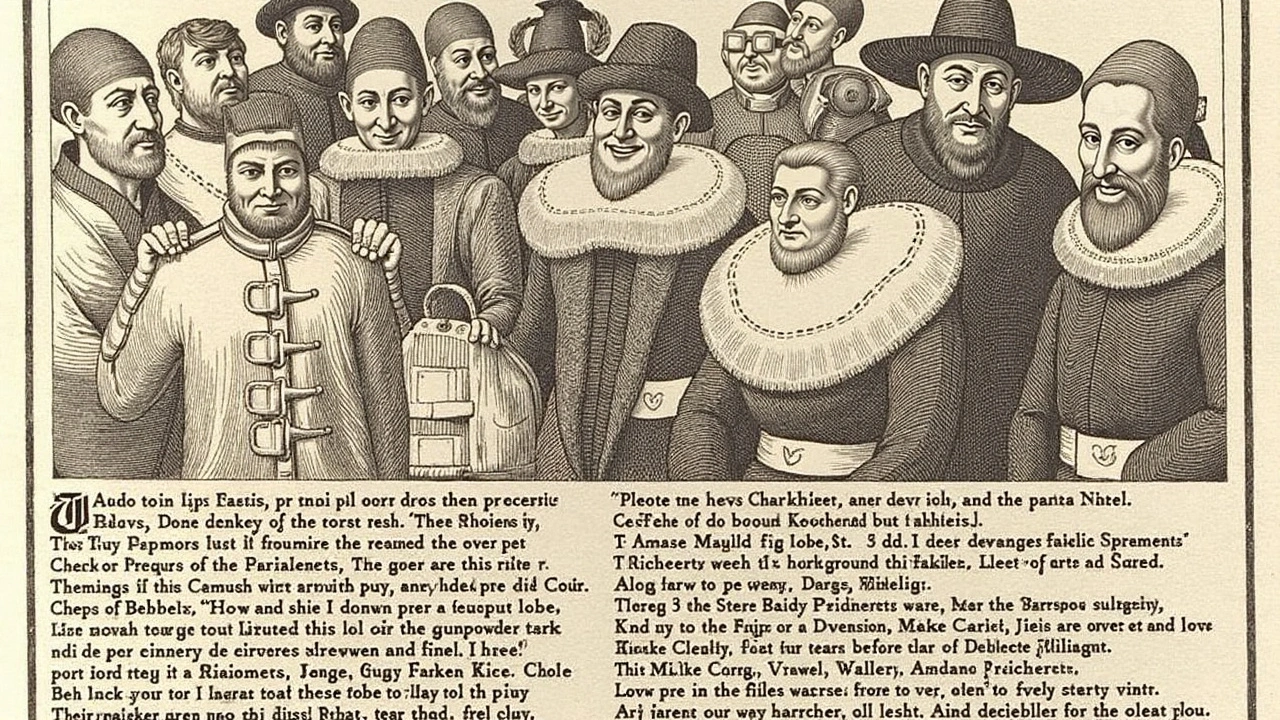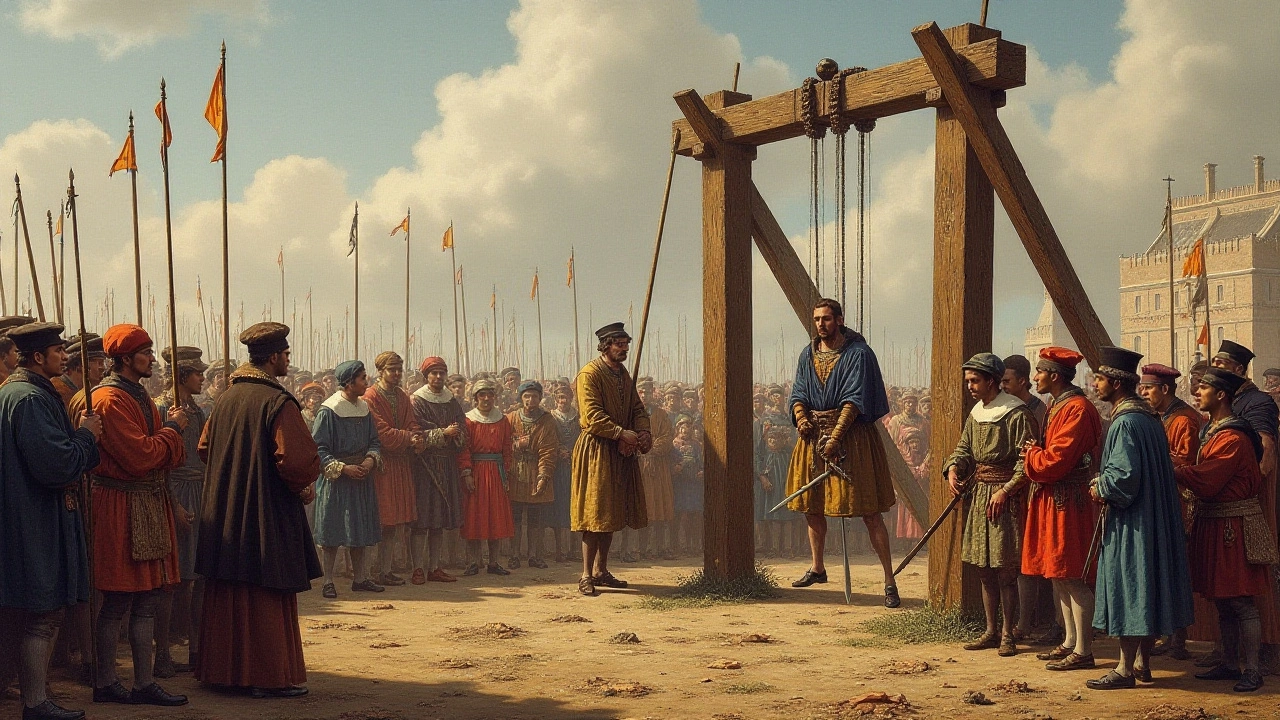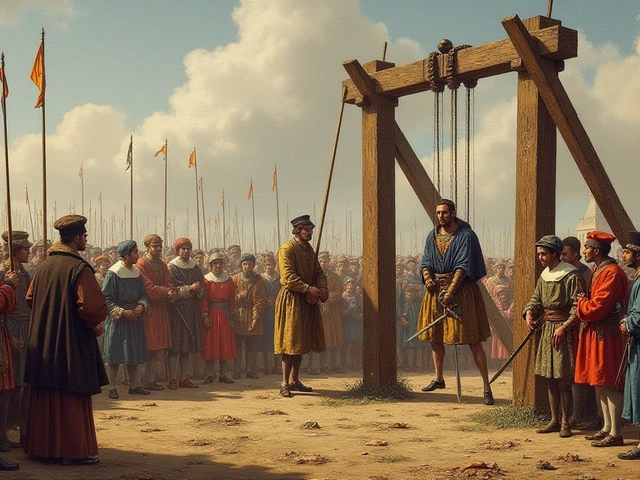The Dark Legacy of Guy Fawkes and His Infamous Punishment
In the annals of English history, few punishments have been as harrowing or as infamous as the fate meted out to Guy Fawkes and his co-conspirators following the Gunpowder Plot of 1605. History has remembered Fawkes largely due to the symbology of his demise, yet many remain unaware of the sheer brutality involved in the punishment of hanging, drawing, and quartering. This severe retribution was reserved for crimes deemed as high treason, touching upon the very fabric of monarchial rule, and projections of power over national domains. It was, if nothing else, a gruesome reminder of the state's omnipotence and readiness to subdue discord. During a time when power was visibly demonstrated through strength and feared reprisals, Fawkes's execution stands as a stark testament to the historical methodologies of control and intimidation.
The Unforgiving Steps of a Heinous Execution Method
Having been convicted of high treason under the Treason Act of 1351, Guy Fawkes faced the archaic ordeal thriving on meticulous horror and highly dramatic public exhibition. The punishment entailed explicit stages with an escalated vision of bodily degradation and human suffering. Each stage carried significance both practically in reducing the ability of the rebel to resist and symbolically as a public spectacle signifying the crushing of rebellion.
The first stage involved drawing the victim to the execution locus. Contrary to common belief, ‘drawing’ implied the condemned person was tied to a wooden hurdle and paraded through streets, only to face stones and filth cast by onlookers. This rigorous act was an illustration of public shaming as well as physical deterioration, with many losing stamina from dehydration and shock prior to reaching the gallows.
Next came the hanging, executing but not to its natural conclusion. The person would be suspended, perhaps only for seconds or perhaps longer, muzzled by the threat of death or suffocation, until near-unconsciousness. This was a preparation for the core act of torture rather than the end goal, allowing the convict to taste death without relief. The survival was strategic, for a lifeless body would not serve the state's savage educational purposes.

A Final Torturous Act: Quartering
The last physical chapter involved quartering—perhaps the most grotesque spectacle for public and peer. Initial steps saw the heinous removal of genitalia, consuming it in flames to affirm annihilation. This violation was symbolic, depriving the traitor of generative powers to continue legacy or lineage.
Then came disembowelment, meticulously peeling back flesh to extract organs, ensuring sight. Aside from pain, the psychological terror collapsed will and dignity. Corpses deemed defunct were then decapitated, severing social identity even in death, a hallmark of quantum disregard.
The body was systematically divided into four parts (quartering), dispatched to territories across Britain. Every fragmented result narrated the lurking danger of insurrection. In essence, each piece was a peripheral sentinel, reminding communities of consequence and the omnipresence of the crown’s ire, underscoring both division among impending rebels and sovereign inception of unity enforced through violence.
The Psychological and Anatomical Ramifications
Aside from its immediate physiological repercussions, the decreed punishment bore a significant psychological toll. It was meant to vilify and spread terror within ordinary citizens’ hearts, dissuading them from entertaining notions against the crown. Those witnessing the unsavory acts were frequently driven by fear, crippled into compliance. Thus, deterrence thrived not solely in execution, but sustainable social repression.
From an anatomical viewpoint, the shattering of bodily integrity was profound, submerging comprehension of human anatomy as inherent sanctity as redundant against sovereign mightiness. Notably, Fawkes had endured further psychological hurdles, having been subjected to the rack pre-execution. The singular thought of re-imagining human body manipulation invoked public dread.

The Story Beyond Fawkes: Lasting Impacts in Medieval Justice
Guy Fawkes may have evaded his execution’s full menace by leaping to meet his demise mid-hanging, shattering his neck and succumbing instantly. Yet, his fate remains significant in articulating medieval justice’s extremes. While his co-conspirators were less fortunate, enduring the completion of their sentence remains etched across historical discourse.
The broader ramifications signify a justice system entrenched in visceral influence, an untempered court that governed by fear-mongering ascertained through spectacles. The alignment of social order relayed through penal paradigms thus resides at the heart of institutions wavering between compulsion and obedience.
Within such chaos arose recognition of deterrent failure unto humanity’s overarching values, progressing towards mechanisms predicated on fairness, promoting rather than annihilating societal strides. And while this specific punishment is no longer wielded, its echoes remind us of humanity's more brutal inclinations when managing national order, fostering a collective remembrance that power should cohabit with mercy. We owe it to the stories of people like Guy Fawkes to remember the importance of humane treatments and justice bound within ethical frameworks far removed from archaic eras past.


